
>above> new phantom 2 vision+ and hero 3
Last April a Phantom 2 quadracopter using a Hero3+ Black Edition was flown into fireworks. No one is sure how impactful this particular feat is however on the 4th of July quite a few drone videos were made.
video shot april 2014
One in particular went viral, shot by videographer Jos Stiglingh who was presented with a unique opportunity to film fireworks up close, also used a Phantom 2 and Hero3+ Silver. 2014 may become known as the year of dronography and fireworks credited with fully catching the public’s eye. [ the video ]
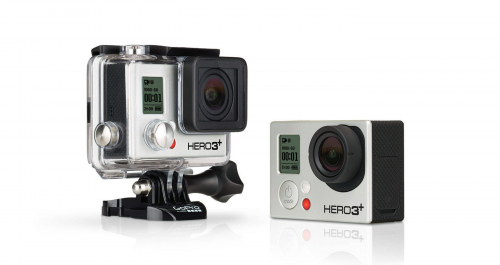 hero 3+ black edition | hero 4 to be released october 2014
hero 3+ black edition | hero 4 to be released october 2014
Here are two companies seemingly designing products for each other. [ gopro ] manufactures high-definition personal cameras, often used in extreme action video photography. They are known for being compact, lightweight, rugged, wearable or mountable in unusual places such as outside planes, cars, boats, bicycle and motorcycle helmets, army tanks and drones. The cameras capture still photos and/or video in HD through a wide-angle lens and can be configured to work automatically with minimum intervention and/or remotely.
[ dji ] as of 2013, manufactures micro air vehicles (MAV)s for aerial survey / surveillance. With it’s relative ease of use and affordability, these unmanned aerial vehicles (UAV) are also popular amongst aerial photographers for aerial photography and videography.
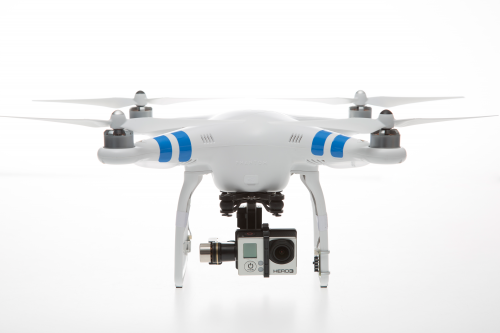 new phantom 2 vision+ and hero 3
new phantom 2 vision+ and hero 3
GoPro lists the Phantom ‘for everyone’ on their website and also has an ‘expert’ product link which points to the new Spreading Wings S1000. A fully loaded Phantom 2 Vision+, $2,500 usd; Spreading Wings S1000, $6,000 usd.
[ drone perspective ] [ gopro goes public ] [ getting started in dronography ]

A remote control drone, a high-performance mini-video camera, a photographer and North Shore’s Pipeline beach collaborate on a very sweet surfing video. Taken December 2013.
[ Phantom ] [ hero 3+ ] [ eric sterman ] [ Pipeline ]

A day after returning from an early January North Beach trip with friends, the video you just watched, was sent by a friend who talked me into taking a surfing lesson. Up to that point we were finding ourselves on the beach at 9am a few times, coffee in hand, watching the surfing at Pipeline. Pretty heady stuff. You could see boards flying in the air. One surfer’s board was broken in half and spectators ran to have a photo taken with him and his broken board. Before going to bed we would all watch Youtube tutes on surfing. Plans to surf the big waves prior to our trip were dashed when we saw the waves, the reefs, face-to-face.
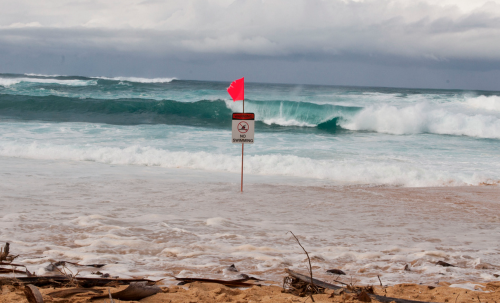 click > enlarge
click > enlarge
These signs are never taken down during the month of January. No one is swimming. But if you have a surfboard or a boogie board and swim fins, the signs are ignored. Here’s what I learned in a few short days about surfing…
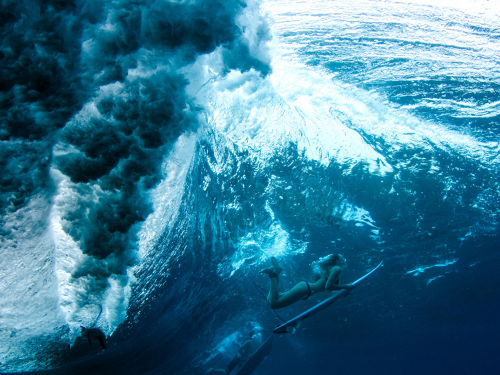 the duck dive
the duck dive
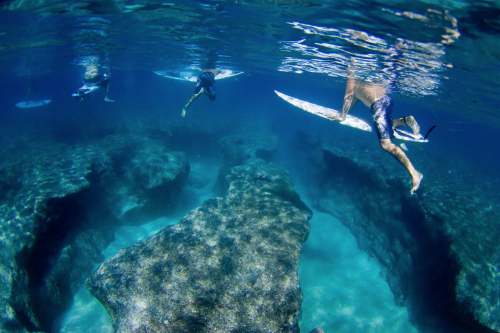 waves break over a razor sharp reef where the water is only six feet deep | look at the video again!
waves break over a razor sharp reef where the water is only six feet deep | look at the video again!
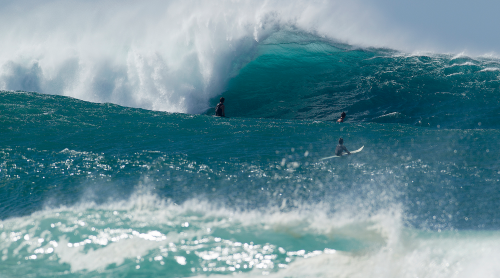 6-8 foot waves measured from back of wave
6-8 foot waves measured from back of wave
A California surf photographer now living in Hawaii said waves in Hawaii are measured from the back and in California from the front. No official statement available.
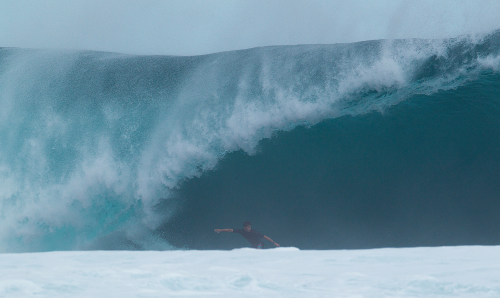 15-18 feet-high in six-feet of water
15-18 feet-high in six-feet of water
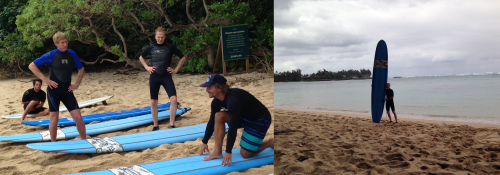 the fine points of the ‘pop-up’ | in a cove just north of pipeline
the fine points of the ‘pop-up’ | in a cove just north of pipeline
The North Shore was considered un-surfable prior to the evolution of plastic boards with fins, c. late 1940s. Surfing is the equivalent of skiing down an avalanche. A surfing lesson on North Shore in January is like taking a lesson on a double black run that’s both rocky and narrow. Our cove where our lessons transpired required paddling 200 yards to the protective reef where, on the day we surfed, the waves on the first reef were 3-4 feet-high and the water 18 inches! deep. Akin to running and sliding on a sheet of glass shards. I took a pass. Going to watch the video again thinking, ‘Eddie would go!’
[ surfboard history ]

 hero 3+ black edition | hero 4 to be released october 2014
hero 3+ black edition | hero 4 to be released october 2014 new phantom 2 vision+ and hero 3
new phantom 2 vision+ and hero 3









